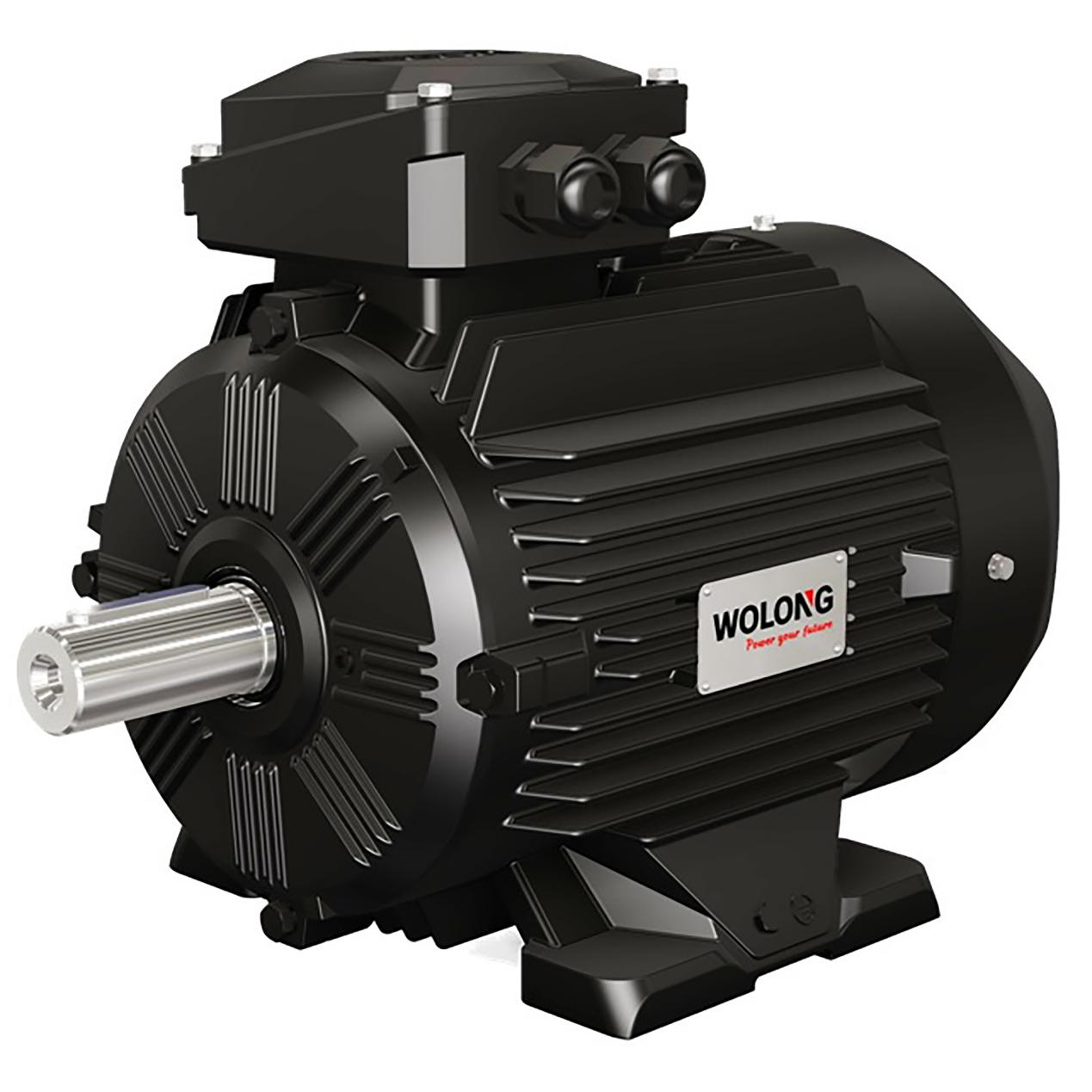Permanent magnet synchronous motor uses permanent magnet to provide excitation, which makes the motor structure simpler, reduces the processing and assembly costs, and eliminates the collector ring and brushes that are prone to problems, improving the reliability of motor operation; because no excitation current is required, there is no excitation loss, which improves the efficiency and power density of the motor.
Permanent magnet synchronous motor consists of st ator, rotor and end cover. The stator is basically the same as the ordinary induction motor, and a laminated structure is used to reduce the iron loss during motor operation. The rotor can be made solid or laminated. The armature winding can be concentrated full-pitch winding, distributed short-pitch winding and unconventional winding.
ator, rotor and end cover. The stator is basically the same as the ordinary induction motor, and a laminated structure is used to reduce the iron loss during motor operation. The rotor can be made solid or laminated. The armature winding can be concentrated full-pitch winding, distributed short-pitch winding and unconventional winding.
Permanent magnet motor is a DC motor with permanent magnet as the stator and only the rotor as the coil. The stator of the ordinary motor is a coil (electromagnet).
The difference between permanent magnet motor and ordinary motor is:
1. Magnetic field properties. After the permanent magnet motor is made, it can maintain its magnetic field without external energy; ordinary motors need current to have a magnetic field.
2. Rotor structure. Permanent magnet poles are installed on the rotor of permanent magnet motors; excitation coils are installed on the rotor of ordinary motors.
3. Applicable occasions. Permanent magnet motors are usually used in low-power occasions; ordinary motors, especially excitation motors, are often used in high-power occasions.
Ordinary motors refer to an electromagnetic device that realizes the conversion or transmission of electric energy according to the law of electromagnetic induction. It is represented by the letter M in the circuit. Its main function is to generate driving torque as a power source for electrical appliances or various machinery.
Permanent magnet motors are a kind of motor that uses permanent magnets to establish a magnetic field; they are mainly used in industry, such as common coal mine magnetic separators; through the special properties of permanent magnet motors, ore is screened, greatly improving operating efficiency.
Characteristics of permanent magnet motors:
1. Magnetic field properties. After the permanent magnet motor is manufactured, it does not require external energy to maintain its magnetic field; ordinary motors require current to be passed in order to have a magnetic field.
2. Rotor structure. Permanent magnet poles are installed on the rotor of permanent magnet motors; excitation coils are installed on the rotor of ordinary motors.
3. Applicable occasions. Permanent magnet motors are usually used in low-power applications; ordinary motors, especially excitation motors, are often used in high-power applications.
Permanent magnet motors are motors with magnets, most of which are DC motors, while AC motors are motors that use AC power.
Permanent magnet motors are a type of hybrid permanent magnet motor with rectangular pulse waves, sinusoidal currents, and simple structure, high reliability, and high efficiency.
Ordinary motors have fast response, large starting torque, and the ability to provide rated torque from zero speed to rated speed.
Then the difference between permanent magnet motors and ordinary motors can be clearly distinguished.
Ordinary motors: mainly used for household use, such as internal motors such as fans/washing machines, and the power supply is 220V household electricity, with relatively small corresponding power and application range;
Permanent magnet motors: mainly used in industry, such as coal mine magnetic separation, etc., and the requirements for the use environment and site are also relatively strict.
ball bearing motor, belt conveyor motor, belt drive electric motor
Post time: Dec-09-2024

